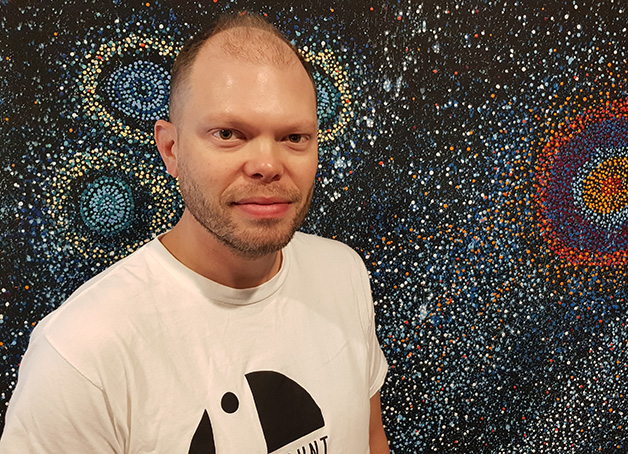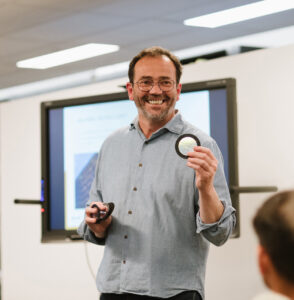
PEOPLE
WE-EF asked Dr Duane Hamacher, an astronomer and Senior ARC Discovery
Early Career Research Fellow at the Monash Indigenous Studies Centre about
the importance of the dark sky and about what lighting professionals can do to
help us see it.
Q. Why do you believe it’s important for people to be connected to the sky?
A. Our collective heritage is shared in the stars. Humans have long gazed at the night sky for inspiration, but we have also used it as a memory aide. As many Indigenous elders say, everything o n the land is reflected in the sky. The stars serve as a calendar, a navigational map, a science text, and a law book. In modern times, we have lost much of our connection to the stars as they are washed out by artificial light and we spend more and more of our time staring at TVs and smart phones. Our celestial connection is engrained in our DNA. Those who have been moved by the sight of a truly dark sky will know this… it triggers a primeval sense of awe and fascination, helping us gain perspective about our place in the universe.
Q. What are the most detrimental effects of too much artificial light at night?
A.Too much artificial light detrimentally impacts our heritage, our health, and our wildlife. We lose our connection to the sky as we spend more time looking down than up. The influence of the stars is lost in the brilliant glow of street lights, phones, advertisements, and headlights. As we are gradually separated from the stars, our connection to the cosmos and our sense of awe succumb to eyes and mental states damaged by constant exposure to artificial light. Our circadian rhythm is sent in a downward spiral. It is not only our health that is detrimentally impacted by overexposure to artificial lights, particularly blue LED light. Our wildlife is also affected. Animals are blinded by lights and drawn away from navigation pathways, unable to sleep, breed, or feed properly.
Q. What can light professionals do to help minimize light pollution?
A.Solutions to reduce or eliminate overexposure of artificial light can be found in the development of innovative light technology and engineering. Lighting professionals must consider the amount of energy lights use, the type of light emitted (blue is bad!), how areas are illuminated (reducing scatter and spill), ensuring light is not facing skyward, and finding ways to reduce the unneeded duration of illumination. Professionals should always consider the impact of industrial lighting on the sky, our wildlife, and our health!
Q. What is the significance of preserving Indigenous knowledge when it comes to the sky/stars?
A.The very existence of Indigenous knowledge is of upmost importance and relevance, regardless of how it is valued by non-Indigenous people. Non-Indigenous people, organisations, and government bodies have a responsibility and duty to do their part to preserve Aboriginal and Torres Strait Islander heritage, knowledge, and health. Excessive artificial light is causing damage to the health and wellbeing of Indigenous people, and threatening their knowledge systems by erasure of the sky. This is the only reason that matters and one we must address with the upmost respect and significance

